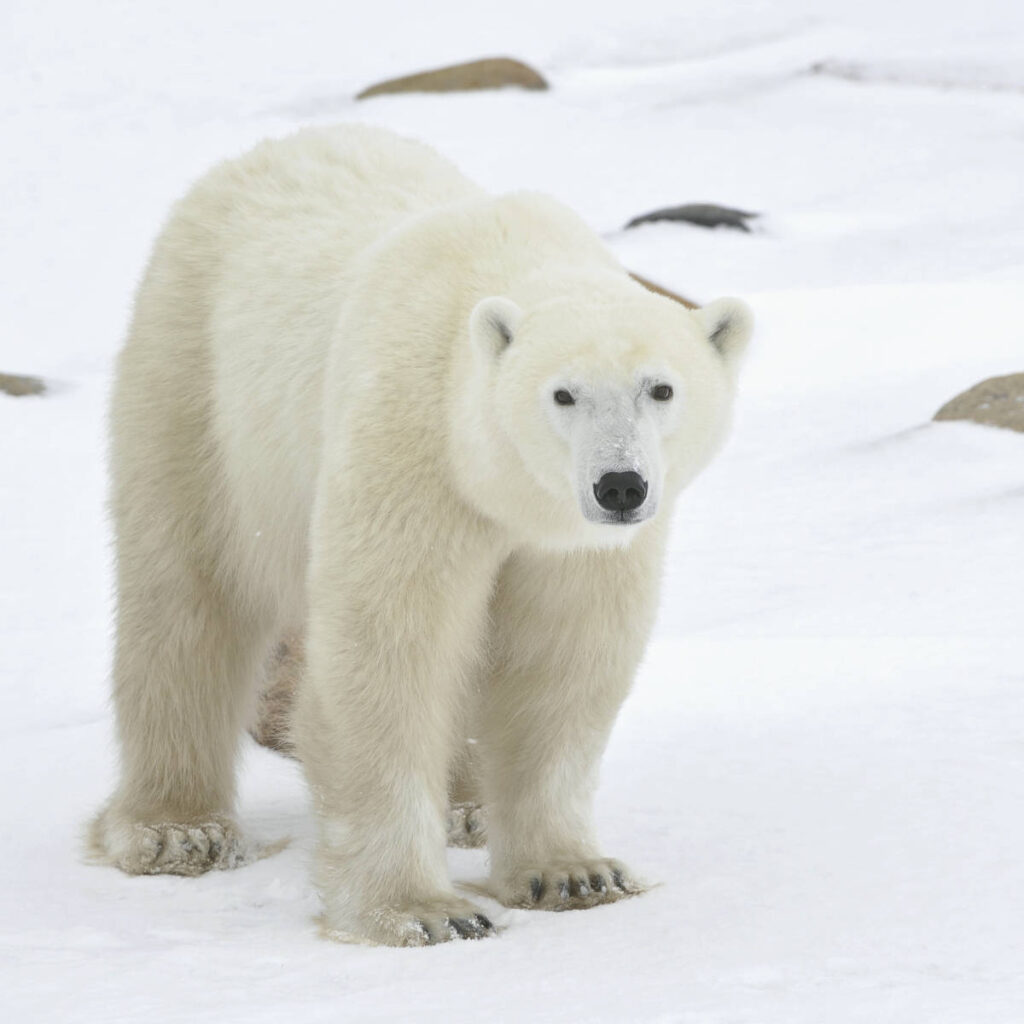Last Reviewed and Updated on July 27, 2022
Polar bears are one of the largest land animals, and their distinctive white fur makes them one of the most recognizable as well. But is their fur really white? Explore this as well as many other amazing facts about polar bears.

1. Their fur is transparent
We’re kicking off this list of facts about polar bears with the color of their fur. The hair of polar bears is hollow and transparent, but it does appear white. To help you imagine how their hair looks white, let’s take a look at optics fibers. If you take a single optic fiber, you will see it is transparent. However, grab a bunch of them, and as a whole, they will appear more white.
Look at single polar bear hair under a magnifying glass, and you will see it’s pretty much transparent. Looks at many of them together, and they will appear white.
2. Their skin is dark gray (black)
What may come as a bit of a shock is the fact that the skin of the polar bear is dark grey. This is an adaptation to their cold habitat, as darker skin allows them to better absorb the UV lights from the sun.
It was thought the reason for transparent hair is so the sun can reach the dark skin, but this has been disputed.
3. They are excellent swimmers
Not only are they great swimmers and divers, but they also have impressive stamina. Polar bears often swim for days. One bear was reported to swim for 9 consecutive days and swam over 400 miles / 700 km to reach ice far from land.
Polar bears swim in the dog paddle fashion. They can swim at speeds of 6 mph / 10 km/h.
4. They can resort to cannibalism
Cannibalism isn’t rare in polar bears. They will usually resort to eating other polar bears if food is scarce.
5. Polar bear is the largest bear and largest land predator
There are 8 different species of bear, and the polar bear is the largest of them all. It is also the largest land predator, followed by a brown bear and a tiger.
6. Polar bears have a keen sense of smell
They use their excellent sense of smell to locate their prey. It can smell its prey nearly 1 mile / 1.6 km away, even if it’s buried 3 feet / 1 m under the snow.
7. Seals make up most of their diet
They are the most carnivorous species of the bear family; the majority of their diet consists of meat, specifically seals.
8. Polar bears and penguins live on the opposite poles
You will often find images where penguins and polar bears are pictured together, but you won’t find such a sight in nature. Polar bears are arctic animals and can be found in the north pole. The majority of penguins live on the south pole, mostly in the Antarctic and surrounding areas. Only one penguin species natively lives in the northern hemisphere, near the equator, which still puts it far from the polar bear’s natural habitat.
9. They are the only marine mammal that can run or has legs for that matter
Marine mammal is a mammal species that lives most of its life near or inside the ocean. Polar bears are the only one that can effectively run or has legs. Seals, walruses, sea lions, dolphins, and whales are some other marine mammals.
10. Unlike brown bears, polar bears are not territorial
They rather escape than engage in a fight. But there are always exceptions to the rules, so if you ever find yourself in their territory, keep your distance.
11. They are mostly still-hunters
In this hunting method, a polar bear will locate a hole in the ice, which seals use to surface for air. The bear will then silently wait, crouched by the hole for the seal to surface for air. Once the seal exhales, the bear smells it and reaches into the hole, capturing the seal.
They can also stalk their prey when the prey is resting or by raiding the seal nests.
12. Female polar bears have been known to adopt other cubs
This is one of the most interesting facts about polar bears. Multiple cases of females adopting cubs that aren’t their own were recorded. This truly is an “aww, so sweet” moment, but don’t forget, polar bears can turn to cannibalism too, and cubs of other polar bears can be killed by both female and male polar bears.
13. Only pregnant females hibernate
Polar bears don’t hibernate. Only the pregnant females hibernate, or to be more precise; they start denning.
A female bear will dig a maternity den where she will enter a state similar to hibernation, called denning. In this process, the heart rate slows as it does with hibernation, but the body temperature does not.
14. A male is called a boar and a female a sow
And a baby polar bear is a cub.
